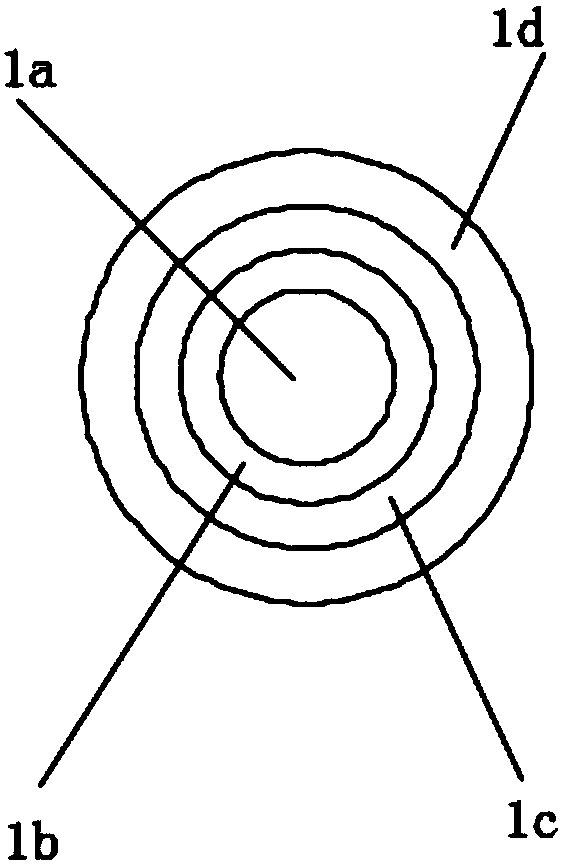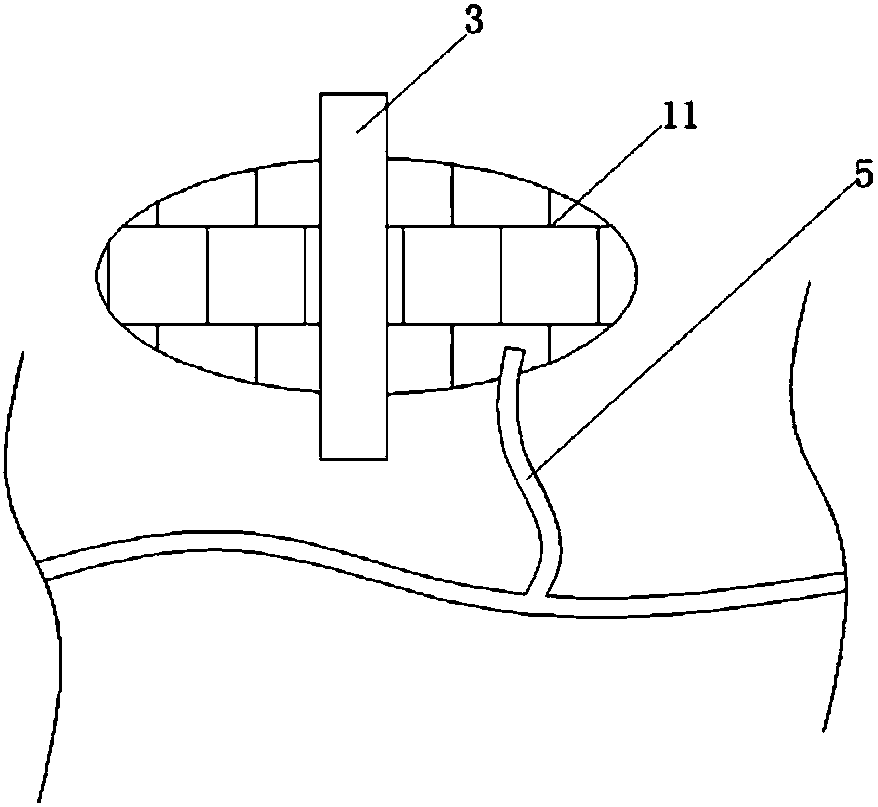Heating wire with shielding function and heating pad with same
A heating wire and heating pad technology, applied in the direction of heating equipment for treatment, medicine equipment, massage auxiliary products, etc. Sexual, powerful, and simple effects
- Summary
- Abstract
- Description
- Claims
- Application Information
AI Technical Summary
Problems solved by technology
Method used
Image
Examples
Embodiment Construction
[0029] The following are specific embodiments of the invention and in conjunction with the accompanying drawings, the technical solutions of the present invention are further described, but the present invention is not limited to these embodiments.
[0030] Such as figure 1 As shown, the heating wire with shielding function includes an aluminum wire 1a, a Teflon layer 1b, a copper wire layer 1c and an insulating layer 1d arranged sequentially from the inside to the outside. The copper wire layer 1c has a spiral structure and is wound on On the Teflon layer 1b, the thickness of the Teflon layer 1b is smaller than the thickness of the insulating layer 1d.
[0031] The insulating layer 1d is formed by injection molding and embedded into the copper wire layer 1c.
[0032] Such as Figure 1-5 As shown, the heating pad includes a heating pad 1, a heating wire with a shielding function is arranged in the bottom of the heating pad 1, a colloid 2 is bonded to the top of the heating p...
PUM
 Login to View More
Login to View More Abstract
Description
Claims
Application Information
 Login to View More
Login to View More - R&D
- Intellectual Property
- Life Sciences
- Materials
- Tech Scout
- Unparalleled Data Quality
- Higher Quality Content
- 60% Fewer Hallucinations
Browse by: Latest US Patents, China's latest patents, Technical Efficacy Thesaurus, Application Domain, Technology Topic, Popular Technical Reports.
© 2025 PatSnap. All rights reserved.Legal|Privacy policy|Modern Slavery Act Transparency Statement|Sitemap|About US| Contact US: help@patsnap.com



